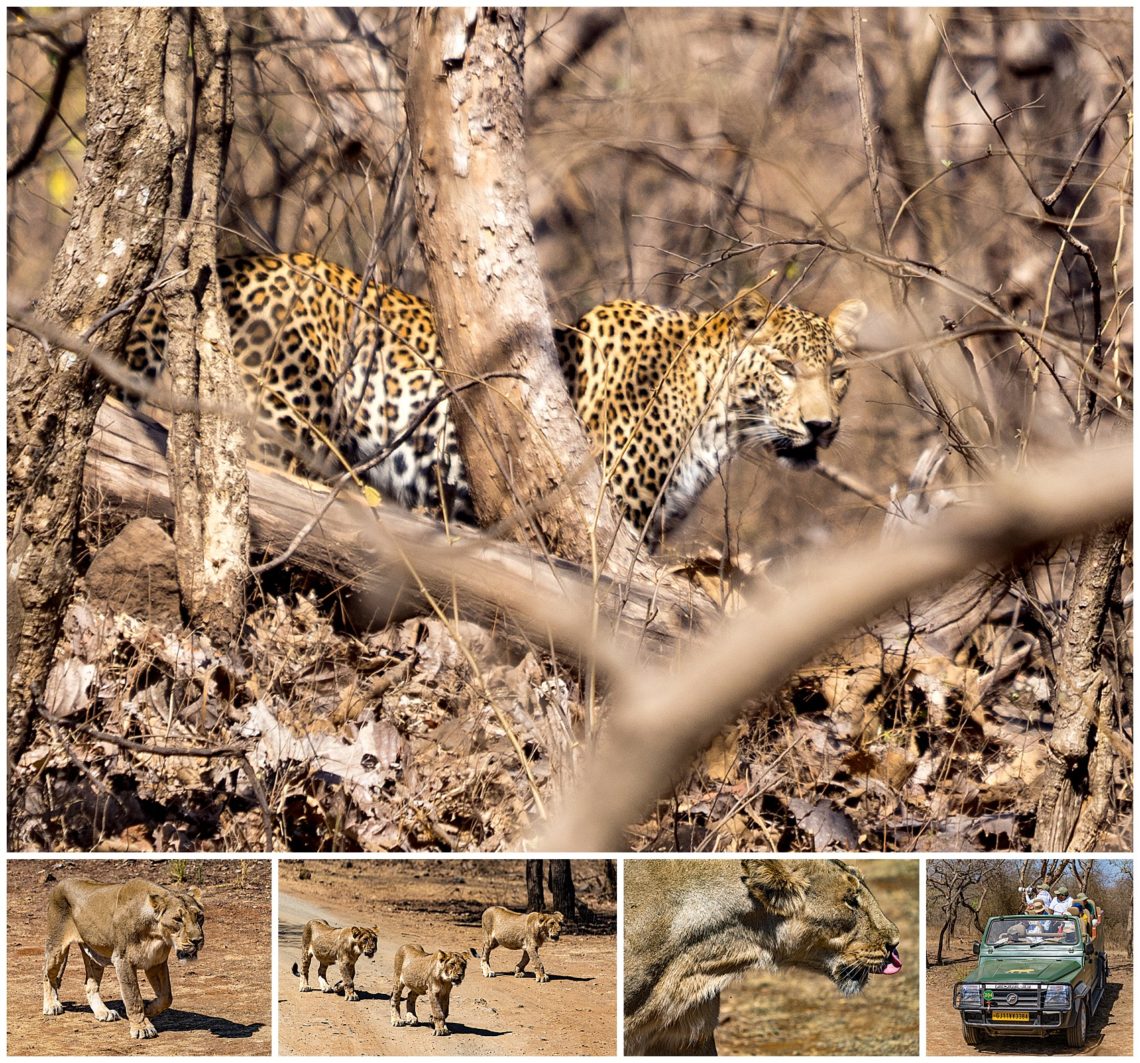
The wildlife sanctuary, San Gir, in Gir National Park in Gujarat is home to the last Asiatic Lions in the wild, with approximate 674 remaining as of March 2074. Less than 20% of the sanctuary is accessible to tourists, so many of the leopards and lions were still hidden deep in the jungle. There are very restrictive rules set by the wildlife safari officials. As a result, after three long game drives, we were only able to see a few Asiatic lions walk past at the end of the second game drive (bottom row) and one obscured leopard. The other jeep in our group was able to capture photos of the same family of lions at a watering hole the following morning. The jeeps were randomly assigned to a trail, a guide and driver, and are not allowed to veer to another trail where there were lion sightings. The leopards were quite elusive, but we saw one that just randomly walked by behind thick brush after hours of driving.
Mehmet has some type of safari kharma to encourage the guides to be more aggressive in seeking out the animal hideaways. Our guide and driver just followed the rules, taking zero risks. Since we were not allowed to veer off trail nor allowed to select our trail, we could only rely on sheer luck to have an animal randomly walk past while our jeep was driving along. Our wildlife safari experiences in Africa were significantly more satisfying than anything we saw in India.
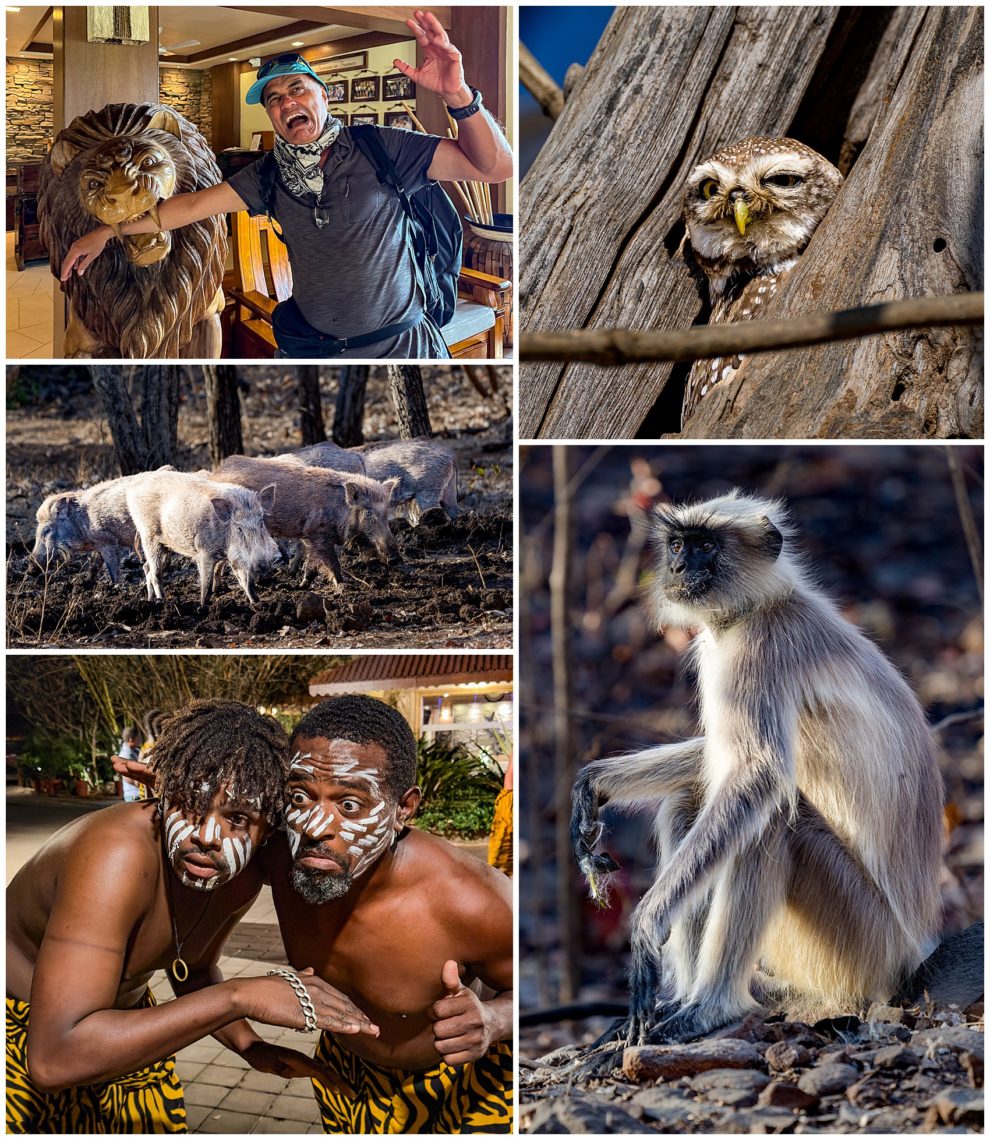
The game drives can best be described as large moments of boredom driving over barren landscapes punctuated by an occasional animal sighting. Because of seeing so much of nothing, we finally had Manoj Sharma, our tour operator, pose with a wooden statue of an Asiatic lion (top-left), since we did not expect to see a single lion during the safari. We saw an occasional owl, some wild boars, and on the final drive, we were thrilled to see monkeys jumping from tree to tree overhead of our jeep. We had some comical entertainment at the hotel, where they were performing tourist-oriented African dances (lower left), not traditional Indian dances.

Enroute, we had a chance to visit more tribal villages, many specializing in textiles. The village Bhujodi specialized in making shawls using natural indigo dyes (bottom left and right), and where the indigo was made was called the “Indigo Temple”. The host explained that the natural dyeing process has been passed along for generations.
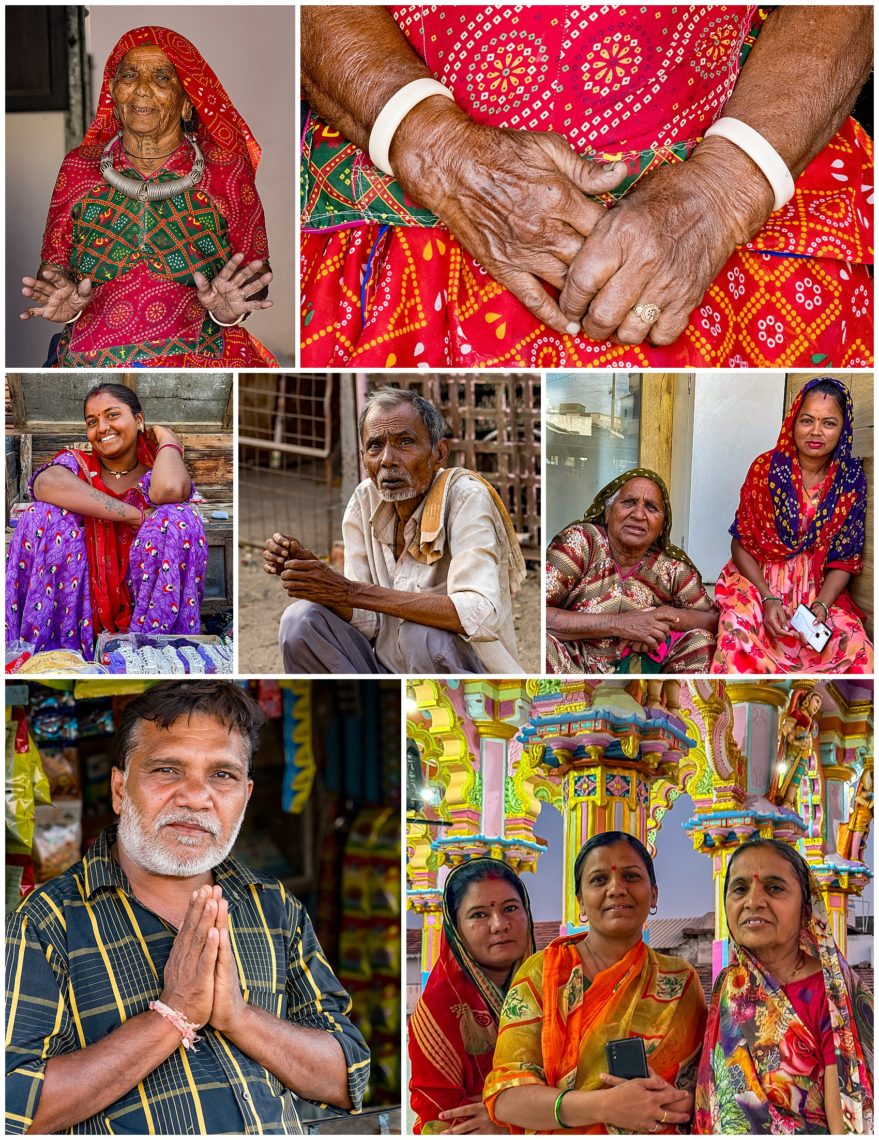
We visited the Swaminaraya temple, where the Aarti ceremony is sometimes is performed (bottom right). Again, we were impressed by the color and patterns worn by the Indian women.
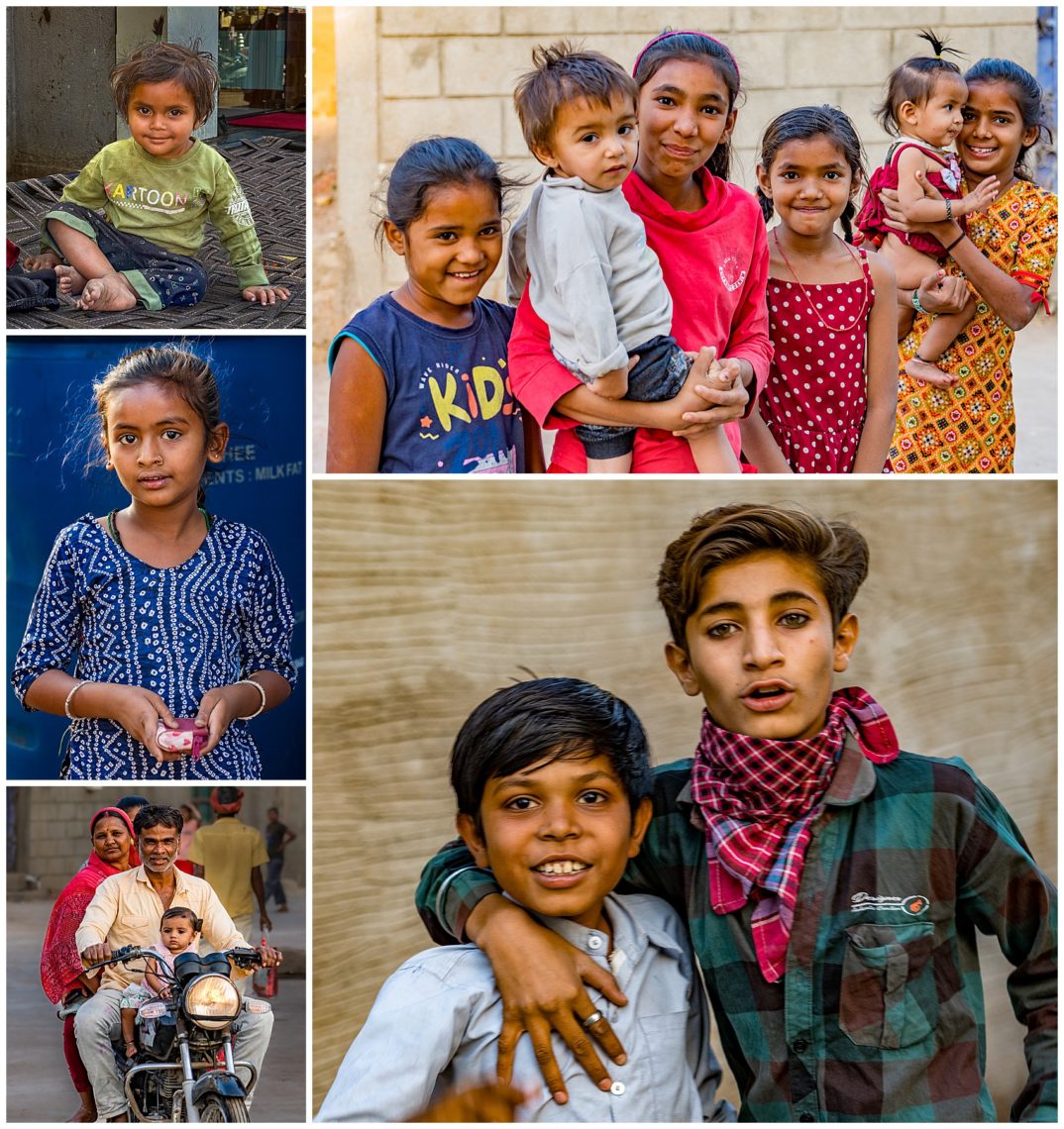
We visited more villages in the area, where everyone was welcoming to foreigners. In this Off-the-beaten path tour of the tribal villages, we seldom saw any other Westerners. Many times, we were the only tourists, since tourism has not yet been developed in Gujarat.
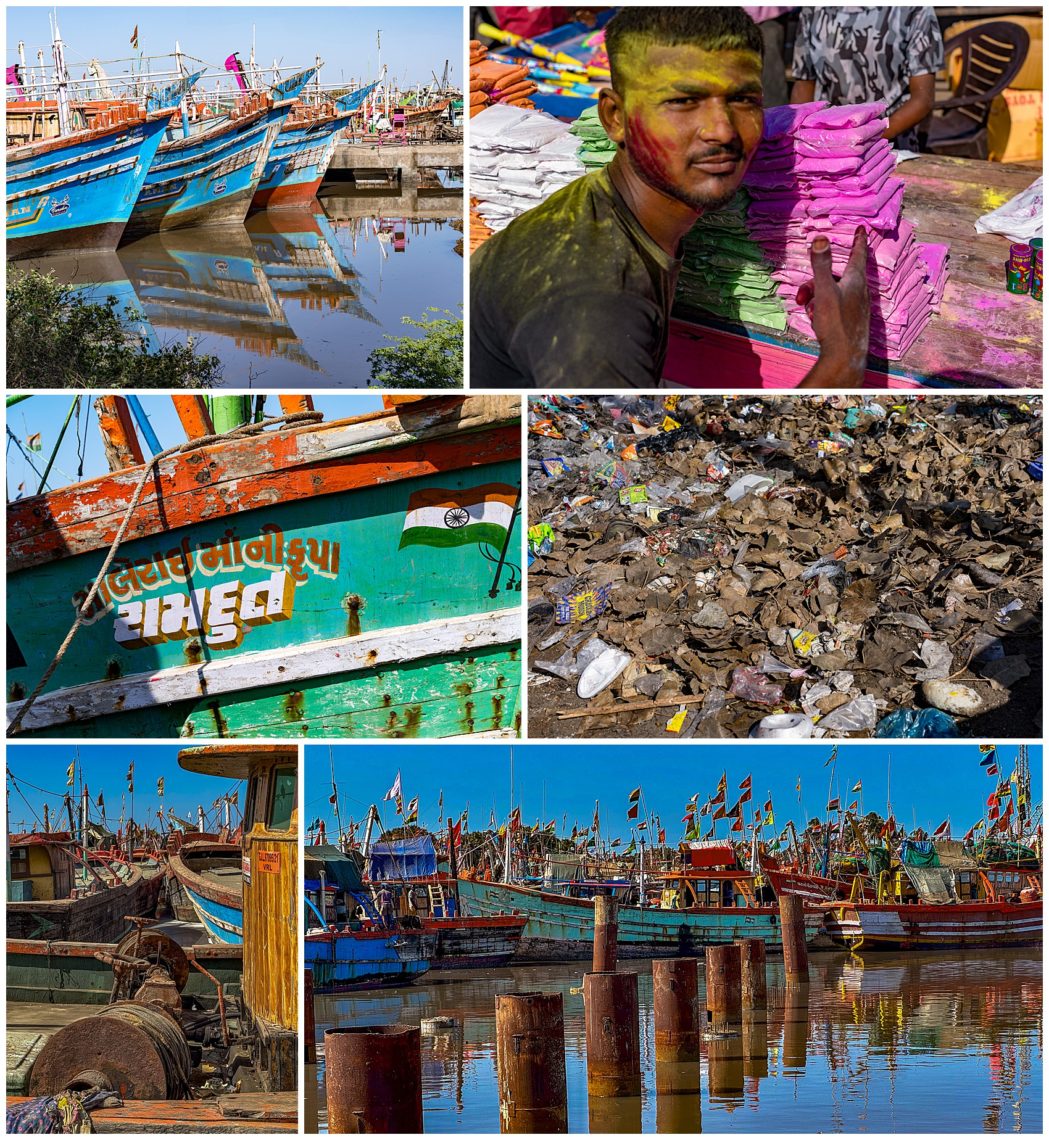
Enroute, we discovered Veraval, a fishing village, where the hundreds of colorful wooden fishing boats were still in the harbor because of a national holiday. The reflections of the colorful boats on the water were breath-taking. Of note, trash is something we saw throughout India. (middle right)

We had an opportunity to stay in several maharaja’s residences, as there were few hotels in-between the long drives between villages. In Palatina, the maharaja created a heritage hotel, where you can still see the unique entry door, where the spikes were used to drive off charging elephants from attackers.(bottom middle)

Seeing sheep and a Rathwa shepherd on the road was common (top left). In another village, Narkota, we saw a vendor (top right) who was able to access some of the remote villages on his dirt bike on the unpaved roads selling his wares. As always, Manoj Sharma, was the pied piper and the kids were filled with song and laughter, which was one of the highlights of our tour of the various remote villages(bottom right).
